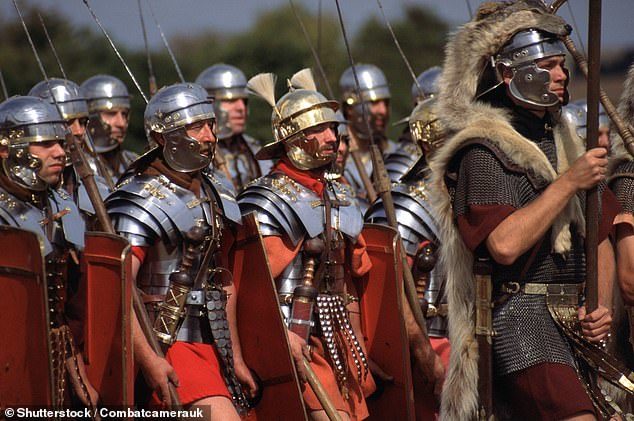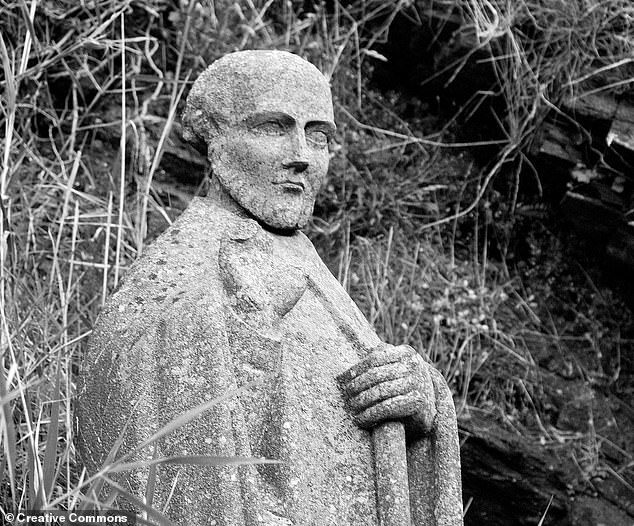
Schools teach that, after Romans left Britain, Britain was invaded and colonised by a throng of German-speaking barbarians from Europe, known as the Saxons.
This, common wisdom dictates, then gave birth to the so-called Anglo-Saxon era which endured in some guise until the Norman conquest of 1066.
This theory is based on the prevalence of German-based languages and questionable interpretations of historical records.
However, Professor Susan Oosthuizen believes the invasion and colonisation, which is thought to have occurred in the 5th century, never happened.
Comment: A turbulent period: 536 AD: Plague, famine, drought, cold, and a mysterious fog that lasted 18 months
Instead, she claims post-Roman Britain slowly evolved and aspects of the fallen empire became ingrained within English culture.
Over centuries, language, religion and culture remained firmly based on the Roman blueprint, while being influenced by small-scale migration and trade with other European civilisations - including the Saxons.
Professor Oosthuizen, of the University of Cambridge, this week gave an online lecture based on her book, released last year and titled 'The Emergence of the English', explaining her theory.
Based on her expert opinion as Emeritus Professor of Medieval Archaeology and the best available research, she lays out a theory for how Britain, and specifically England, emerged from its post-Roman era.
She says there is evidence of clear continuity following the 410AD Roman withdrawal.
Farms were tended in the same way, Roman languages — Latin and Brittonic — were spoken, legal systems were carried over and religion kept its Romanesque structure.
She believes the Romans left a lasting impact on British culture and people.
Professor Oosthuizen adds that the term 'Anglo-Saxon era' is misleading and is forcefully against its use.
Instead, she thinks the post-Roman and pre-Norman time-frame should be divided into three sections: 'late antique' (AD 400-650), 'early medieval' (AD 650-850), and 'pre-Conquest' (AD 850-1100).
'The emergence of the English was an evolution from Romano-British antecedents. It was not a colonial imposition,' Professor Oosthuizen writes.
Previously, it was widely thought that Saxon invaders took over England after sailing across the English Channel from what is now modern-day Germany.
Several scientific studies have backed up this theory, but Professor Oosthuizen believes either the conclusions or the methodology of these papers were flawed.

Much of this is due to the records of a British Monk called Gildas who lived in the 6th century.
He stated that the Saxons posed a military threat after being recruited by British leaders as soldiers.
However, according to Professor Oosthuizen's interpretation, he also claimed Scots and Picts were a bigger threat.
Gildas also wrote that following the demise of the Roman Empire, England's legal system, religious hierarchy and military command structures remained intact, and continued to follow the Roman blueprint.
According to Professor Oosthuizen, the direct impact of the Romans was still seen 400 years after they left British shores.
In the tumultuous and muddled picture of post-Roman England, jostling Lords tried to assert their right to rule by claiming to be heirs to Rome. This was happening up until and during the 8th century.
Professor Oosthuizen says that although a Saxon invasion of England may be a myth, there was definitely some migration of people from Europe to England.
But instead of a rapid and comprehensive 5th Century overhaul of the Roman way of life, England instead underwent a complex transformation that incorporated aspects of European culture, language and religion into a central Romanesque base.
Over time, the Latin and Brittonic languages were abandoned as the native tongue of England, with the Germanic 'Old English' becoming dominant.
Many researchers believe this is evidence of a conquest. However, Professor Oosthuizen believes the switch to this language was a gradual one, brought about by trade.
She dismisses previous genetic evidence that found clear Germanic origins in many English people as being unreliable, due to flaws in how the research was conducted.
Experts continue to debate the significance of Romanisation after 410AD and what sculpted England between the end of the Romans and the start of Norman rule.
How England spent almost half a millennium under Roman rule
55BC - Julius Caesar crossed the channel with around 10,000 soldiers. They landed at a Pegwell Bay on the Isle of Thanet and were met by a force of Britons. Caesar was forced to withdraw.
54BC - Caesar crossed the channel again in his second attempt to conquer Britain. He came with with 27,000 infantry and cavalry and landed at Deal but were unopposed. They marched inland and after hard battles they defeated the Britons and key tribal leaders surrendered.
However, later that year, Caesar was forced to return to Gaul to deal with problems there and the Romans left.
54BC - 43BC - Although there were no Romans present in Britain during these years, their influence increased due to trade links.
43AD - A Roman force of 40,000 led by Aulus Plautius landed in Kent and took the south east. The emperor Claudius appointed Plautius as Governor of Britain and returned to Rome.
In 43AD, a Roman force of 40,000 led by Aulus Plautius landed in Kent and took the south east. The emperor Claudius then arrived in Colchester with reinforcements
47AD - Londinium (London) was founded and Britain was declared part of the Roman empire. Networks of roads were built across the country.
50AD - Romans arrived in the southwest and made their mark in the form of a wooden fort on a hill near the river Exe. A town was created at the site of the fort decades later and names Isca.
When Romans let and Saxons ruled, all ex-Roman towns were called a 'ceaster'. this was called 'Exe ceaster' and a merger of this eventually gave rise to Exeter.
75 - 77AD - Romans defeated the last resistant tribes, making all Britain Roman. Many Britons started adopting Roman customs and law.
122AD - Emperor Hadrian ordered that a wall be built between England and Scotland to keep Scottish tribes out.
312AD - Emperor Constantine made Christianity legal throughout the Roman empire.
228AD - The Romans were being attacked by barbarian tribes and soldiers stationed in the country started to be recalled to Rome.
410AD - All Romans were recalled to Rome and Emperor Honorious told Britons they no longer had a connection to Rome.
Source: History on the net



Comment: As noted in the link above, the island experienced cataclysmic events in the period that followed the Roman departure, and it's likely these depopulation events were the primary driver of the eventual shift in demographics in the country. In Meteorites, Asteroids, and Comets: Damages, Disasters, Injuries, Deaths, and Very Close Call s Laura Knight-Jadczyk writes: See also: